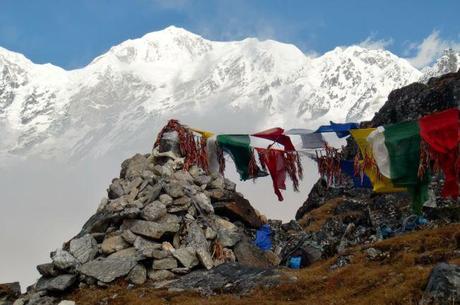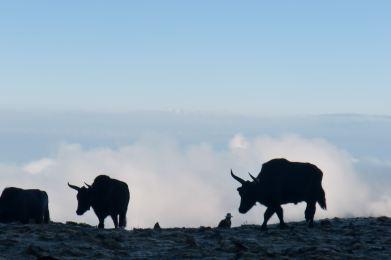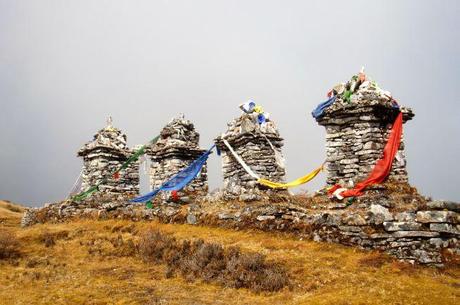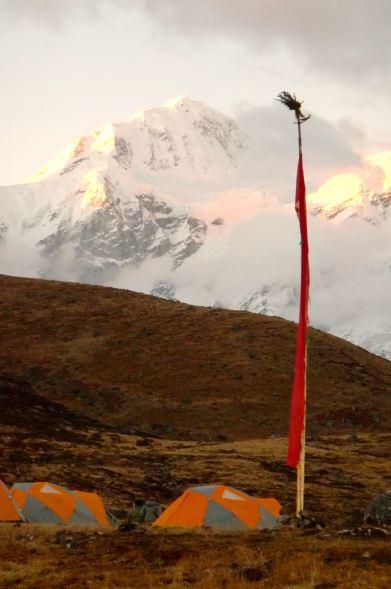
Porters carrying loads below Kabru Massif
I just returned from a long trip abroad. Three weeks in the Himalayas. It was glorious. It was magical. It was horrifying.
Moments of grandeur and high-mountain beauty slice against images of filth and extreme poverty. But what endures as I try to sift through my everyday life, is the memory of smiling locals and a feeling of what can only be described as re-entry syndrome.
I’m no stranger to re-entry syndrome. When I got off a three-week trip on the Grand Canyon several years ago, I stumbled around in a fog for weeks. My usual sense of purpose and industry had vanished. I was left with the big questions that had arisen while floating the Colorado, but none of the simple answers that had reverberated off the canyon walls.
It’s the same now.
Sikkim is a state in India. Wedged between Nepal and Bhutan and butted up against Chinese Tibet, Sikkim was a separate kingdom until 1975. In some ways, it is more Nepali than Indian, and our trek took us along the border between the two countries. Goecha La, our high point, after two weeks on the trail, brought us to within 5 kms of Kanchenjunga, the third highest peak in the world which borders Nepal and Sikkim.

Prayer flags mark the pass into Dzongri

Yak herders bring the animals back to camp
I loved walking amongst these giant mountains. Every morning the sun rose to reveal new ridges and glaciers, taller peaks than the day before and rows and rows of sharp beauty. I especially loved the “not-thinking” required in trekking. We had porters and yaks to carry the heavy gear. My job was only to eat, sleep and walk. I’d pictured spending hours on the trail sorting through the minutiae of my mind–plotting my upcoming book, making a final decision about whether or not to continue my radio show, figuring out how and where and if I could manage to create some significant work.
But that’s not how it worked.
Whole days went by and I just walked. No mental plans were made. No epiphanies found.

Chortens above Dzongri, Sikkim
I wondered if I were squandering my chance. After months of research for my latest book and years of plotting and scheming, this was my opportunity to catch up. To let my mind wander. To come up with my next big idea.

Camp, 14,000 feet
Instead I just looked around. I gaped at the mountain view. I cried at the scenes of poverty in the cities. Some days, while hiking along the base of towering peaks, the tears flowed for no apparent reason. Maybe this was gratitude, I told myself. But even that thought vanished in the monotony of putting one foot in front of the other. Maybe it’s an altitude thing. Perhaps I was a little hypoxic.
Or maybe the physical act of walking was erasing my need to analyze and understand every little emotion and idea that entered my brain.
Maybe I simply needed to be.
Now I’m home, and I’m experiencing reverse culture-shock. There should be a to-do list on my desk a mile long getting checked off one by one. I should be getting back into the groove, preparing for the ski season, stocking up at Costco, obsessing over the weather forecast.
Instead, I feel like I’m floating. Somewhere between the Himalayas and my old life is a new path twisting in front of me like a toy snake. I’ll find it soon enough.
But I’m not in any hurry.

